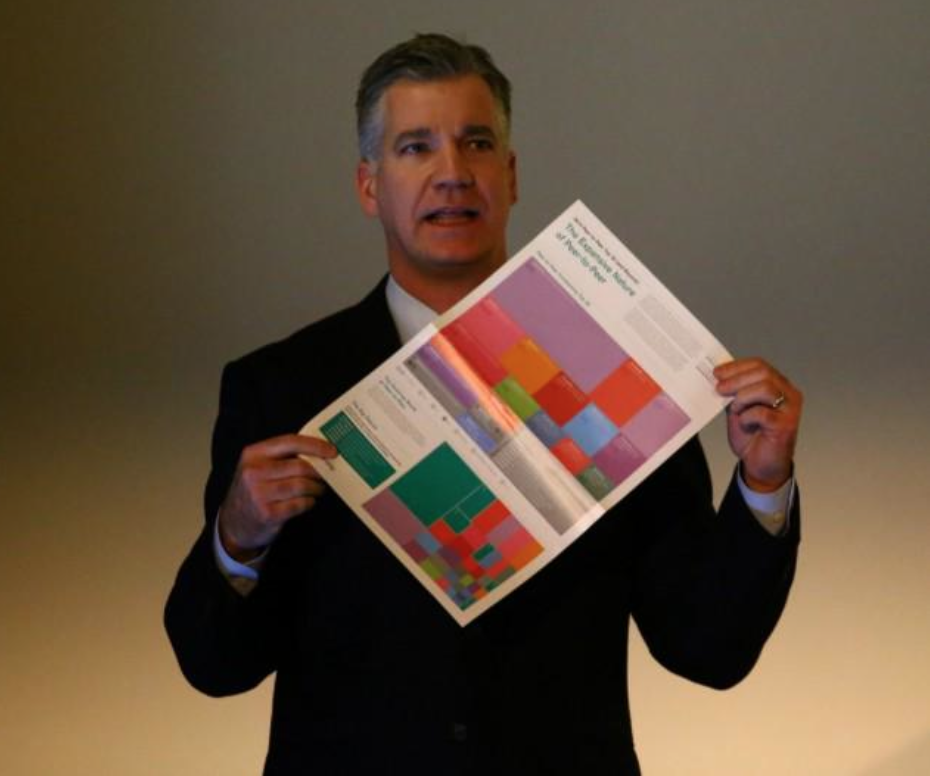Four Ways To Captivate Your Audience
If you find yourself dreaming of warmer weather these days, you’re probably getting ready to head to sunny Orlando, Florida, for the annual Peer-to-Peer Professional Forum Conference. Or, at least you wish you were. If you are one of the lucky P2P professionals heading south for this week’s conference, pay attention to the presenters.
You may be attending the conference to network and gain useful peer-to-peer knowledge, but it’s also a great opportunity to advance your presentation skills. Whether you regularly present in front of a large audience or not, chances are that you need to convey something to someone at some point, and by paying attention to what other presenters are doing right, you can enhance your own skills.
While reading our tips below, reflect on your own presentation style. What do you do well? What could you do better?
Here are four ways to captivate your audience:
The key to practicing your presentation is to make it look like you haven’t practiced at all. Confusing, I know. It’s like ignoring the boy you like in elementary school. It’s one of those occasions where we don’t want our actions to reveal the reality of the situation. If you practiced for 100 hours and you sound like you practiced for 100 hours, that’s not effective. The goal is not to memorize your lines or sound like you rehearsed. The goal is to be so comfortable with the material and the flow that you end up looking and sounding very natural. Practice to sound like you didn’t practice.
2. Move beyond bullet points.
I have a love/hate relationship with bullet points. They bring order and structure to my slides. They give me clues about what I am supposed to cover, ensuring that I don’t leave out any important information. They make my job so much easier. Yet, at the same time, they are boring. One of the most painful presentations I have ever experienced was watching someone read 32 slides of bullet points, word for word. Don’t do that. Please. Bullet points serve a purpose and it’s okay to use them; just don’t use them as a crutch. If you practice enough (See Tip #1) you can replace some of your text-heavy slides with more appealing visual images and still successfully convey the 2-3 main points you want to cover on each slide. I feel strongly about this, so if you need help making your presentations more visually appealing please send me an email.
3. Interact with your audience.
I recently had the pleasure of watching Jenne Fromm present at a conference. I had seen her present many times before, and she is one of my public speaking heroes, but her ability to connect with the audience never ceases to amaze me. There could be 5 people in the room or 5,000 people in the room, but every single person will leave feeling like Jenne is their new best friend. Part of it is because she is human (See Tip #4), and part of it is because she interacts with her audience. Jenne asks questions, provides handouts, incorporates group exercises, shares personal stories – and it all serves to further engage the people in the room. You, as a presenter, are interesting, yes. But so are the people who came to hear you speak. And they’ll be much more interested in hearing you speak if they get to participate too. Give your audience a starring role and watch your engagement level soar.
4. Be human.
If there were just one piece of advice I could give presenters, this would be it: be human. If you make a mistake, own it. If you get flustered, take a deep breath and move on. If you lose your train of thought say, “I’ve lost my train of thought,” laugh about it, and do the best you can. The audience will forgive you. They’re just glad they’re not the ones up in front of the room. It’s true. Some of my favorite presentations involve moments where I made a mistake or forgot what I was going to say and, rather than running out of the room and crying about it (trust me, I was tempted), I just owned it. Somehow overcoming these experiences with the audience created a bond and made us feel like we were all on one team. They wanted to see me succeed. We emerged victorious on the other side and moved on. Together.
Whether you are training your peer-to-peer fundraising staff, sharing what you’ve learned at conferences and seminars, or reporting to your Board or senior leadership – there are numerous occasions where being an effective presenter will serve you well as a P2P professional. Presenting is an art, one that gets better with study and practice.
I can see my parents shaking their heads right now, since they tried to give me this same lecture about study and practice when I was learning how to play the piano many years ago. I was too young to appreciate their wisdom at the time, but they were right. If you want to be a better presenter, study what others are doing and then practice. If you are attending this week’s Peer-to-Peer Professional Forum, you will have the opportunity to learn from a lot of great presenters. I hope to see you at the front of a room, captivating your audience, very soon.
Couldn't make it to the Peer-to-Peer Professional Forum Conference this year? Don't worry, you can now download our full report on the peer-to-peer fundraising trends of 2014 and how to leverage them for success. Download our free e-book "The Expansive Impact of Peer-to-Peer Fundraising" today!
Share this
You May Also Like
These Related Stories

The 2015 P2P Professional Forum Conference: Fundraising, Impact, & BBQ
Get Your Nonprofit Board "On Board" With Your P2P Development





Comments (2)